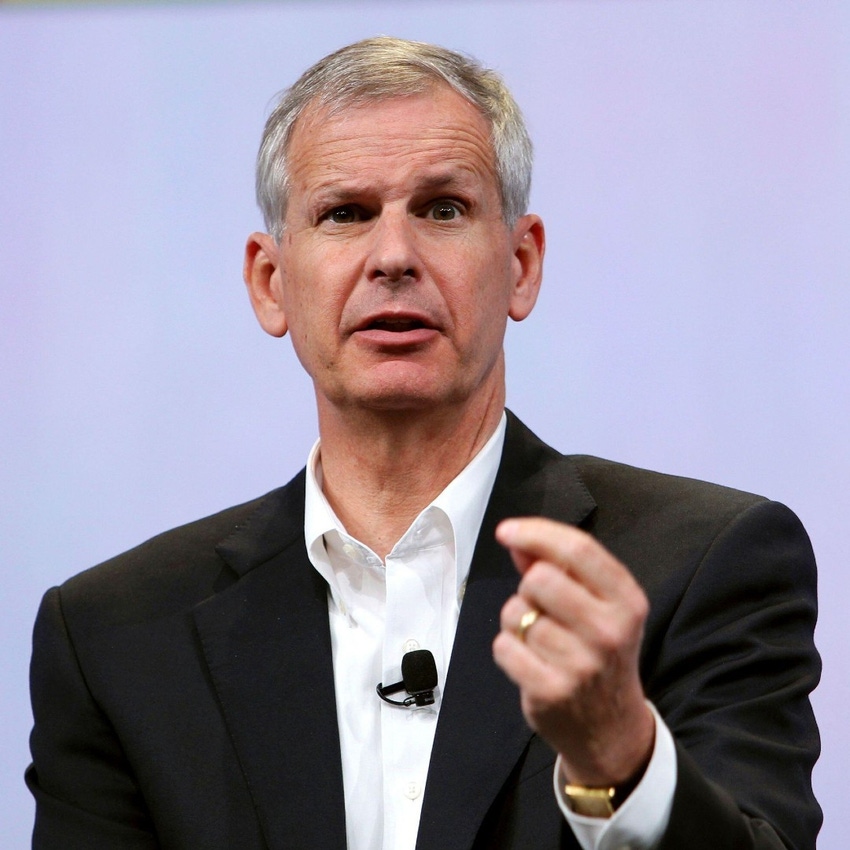
According to Dish Network Chairman Charlie Ergen, the company's second quarter was one of its most productive periods ever. Dish managed to switch on its 5G network in more than 100 cities during the quarter, just in time to meet an FCC deadline for building out the network.
However, Dish is facing some significant challenges, including the fact that the company continues to bleed mobile customers and will need more money to continue constructing its 5G network.
"We will need to raise capital," Ergen confirmed during his company's earnings conference call. He said the credit markets are "choppy" but available, adding that he expects to pay more than 5% interest but less than 15%.
Dish has $1.5 billion in senior notes due in March 2023.
Figure 1:  Dish Network Chairman Charlie Ergen
Dish Network Chairman Charlie Ergen
(Source: Reuters/Alamy Stock Photo)
But Dish may not need to spend a total of $10 billion to build a nationwide 5G network in order to meet the FCC's buildout requirements, as the company has previously said. According to the financial analysts at New Street Research, the company may only need another $5 billion to complete its network.
"Nobody is going to be mad at us if we come in below $10 billion," Ergen said, noting, however, that Dish's network expenses are expected to rise as it works to cover more rural parts of the US.
Customers saying goodbye
Dish's funding shortfall is exacerbated by its shrinking mobile customer base. The company lost another 210,000 retail wireless net subscribers in the second quarter, bringing its total wireless customer base to 7.87 million.
As noted by FierceWireless, the company has now dropped 1.1 million wireless customers since it entered the wireless business in August 2020 with the purchase of Boost Mobile's mobile virtual network operator (MVNO) business from T-Mobile for $1.4 billion. Dish has promised to launch a new postpaid offering under the Boost Infinite brand sometime this fall, an offer that will likely coincide with the introduction of multiple Android phones supporting Dish's unique Band 70 spectrum.
"We are going to come out with aggressive pricing" with the launch of Boost Infinite, said Dish's Stephen Stokols, the executive in charge of Boost and Dish's other wireless brands.
Importantly, company officials also pointed out that T-Mobile has shuttered Sprint's aging CDMA network, which housed some Boost customers, so now Dish is finished transitioning those customers onto another network.
"Now our marketing money can go to new customers," Ergen explained.
Network update
Dish launched its 5G network in June and is now working to expand it to 70% of the US population by June 2023. However, company officials said that Dish is currently only supporting data connections, not voice calls. That's because Dish's network cannot yet support Voice over 5G New Radio (VoNR) technology.
Likely as a result, Dish's Ergen wouldn't say how many customers the company has signed up to its network, noting only that the number is "not material to our business yet."
VoNR, according to Ergen, "is not good enough for the customer experience." However, he said that Dish's new agreement with Samsung should speed up Dish's launch of VoNR, given Samsung's expertise in the 5G market. Samsung is also a major network equipment supplier to Verizon and AT&T.
According to Dave Mayo, Dish's networking chief, the company currently operates 5,000 cell sites and is adding 1,000 cell sites per month to its 5G network. Ergen said Dish hopes to operate 15,000 cell sites by next year, adding that he expects the company to be two-thirds of the way to that goal by the end of this year.
FWA and the enterprise
When questioned about Dish's interest in offering fixed wireless access (FWA) services, Ergen said the company is interested, which is noteworthy considering that both T-Mobile and Verizon have built substantial businesses around FWA and have been using those offerings to cut into cable operators' business.
Ergen said Dish expects enterprises to be among its most profitable customers, followed by postpaid smartphone customers. FWA customers would be next in line, followed by prepaid smartphone customers.
However, Ergen said that he doesn't like how the US government is allocating funding for broadband in rural areas. "I would prefer that the government didn't pick winners and losers," he said.
As for Dish's plans to sell 5G to enterprise customers, Ergen said the company's strategy falls into two basic models. First, he said that Dish could be the 5G systems integrator for its enterprise customers. Or, if that model doesn't work, he said Dish could be a subcontractor to companies like Cisco, Amazon and Dell, which target enterprises. Dish could supply the licensed spectrum for their enterprise offerings, he said.
Losing pay-TV subscribers
Dish officials have described the company's pay-TV business as the cash cow that will fund its entry into the wireless industry. However, Dish's pay-TV business shed around 257,000 customers in the second quarter, up from a loss of 67,000 customers in the year-ago quarter.
The company ended the second quarter with around 9.99 million pay-TV subscribers, including 7.79 million satellite TV subscribers and 2.2 million streaming Sling TV customers.
Overall, Dish reported revenue of $4.21 billion in the quarter, down from the $4.49 billion it scored in the same period a year ago.
Related posts:
— Mike Dano, Editorial Director, 5G & Mobile Strategies, Light Reading | @mikeddano
About the Author(s)
You May Also Like











